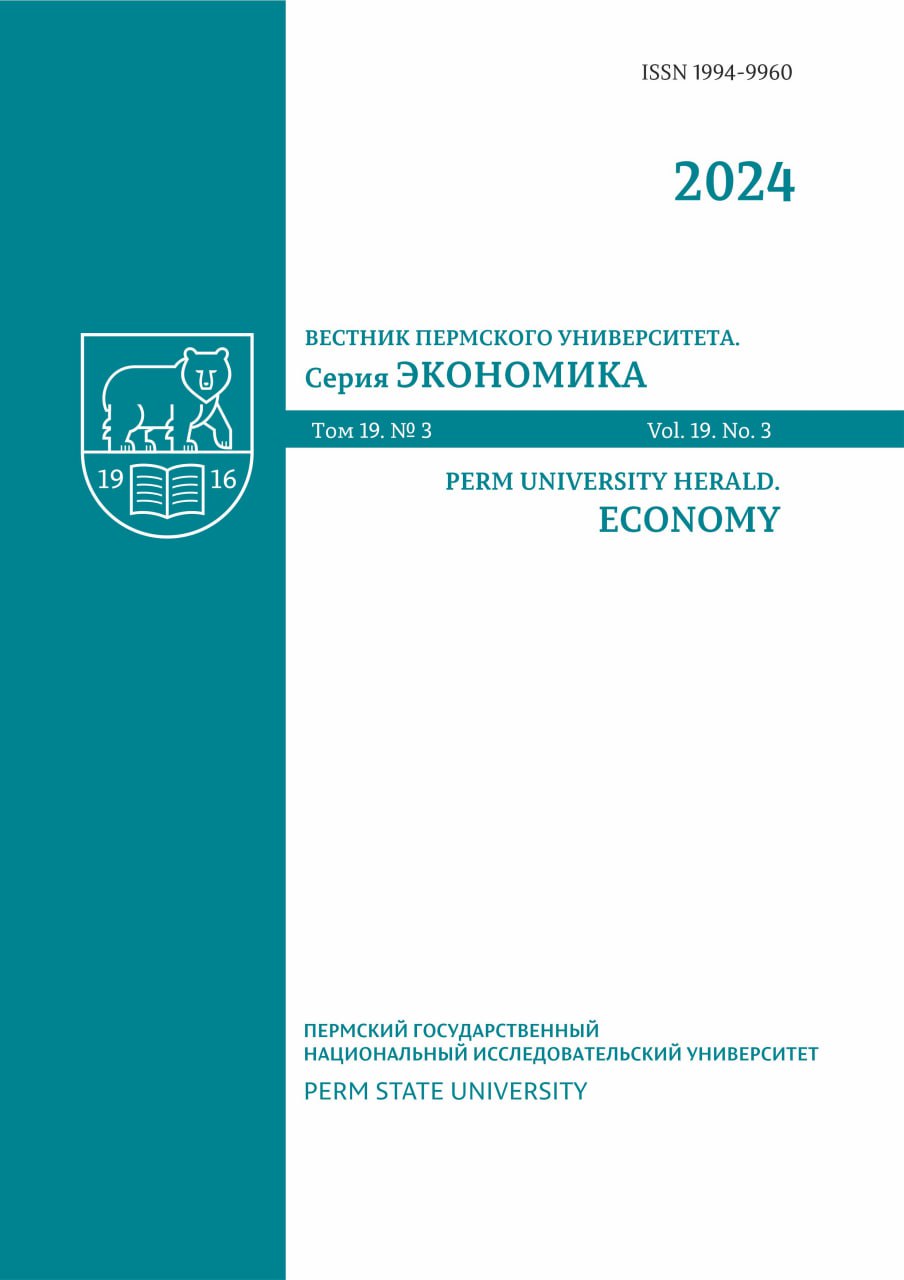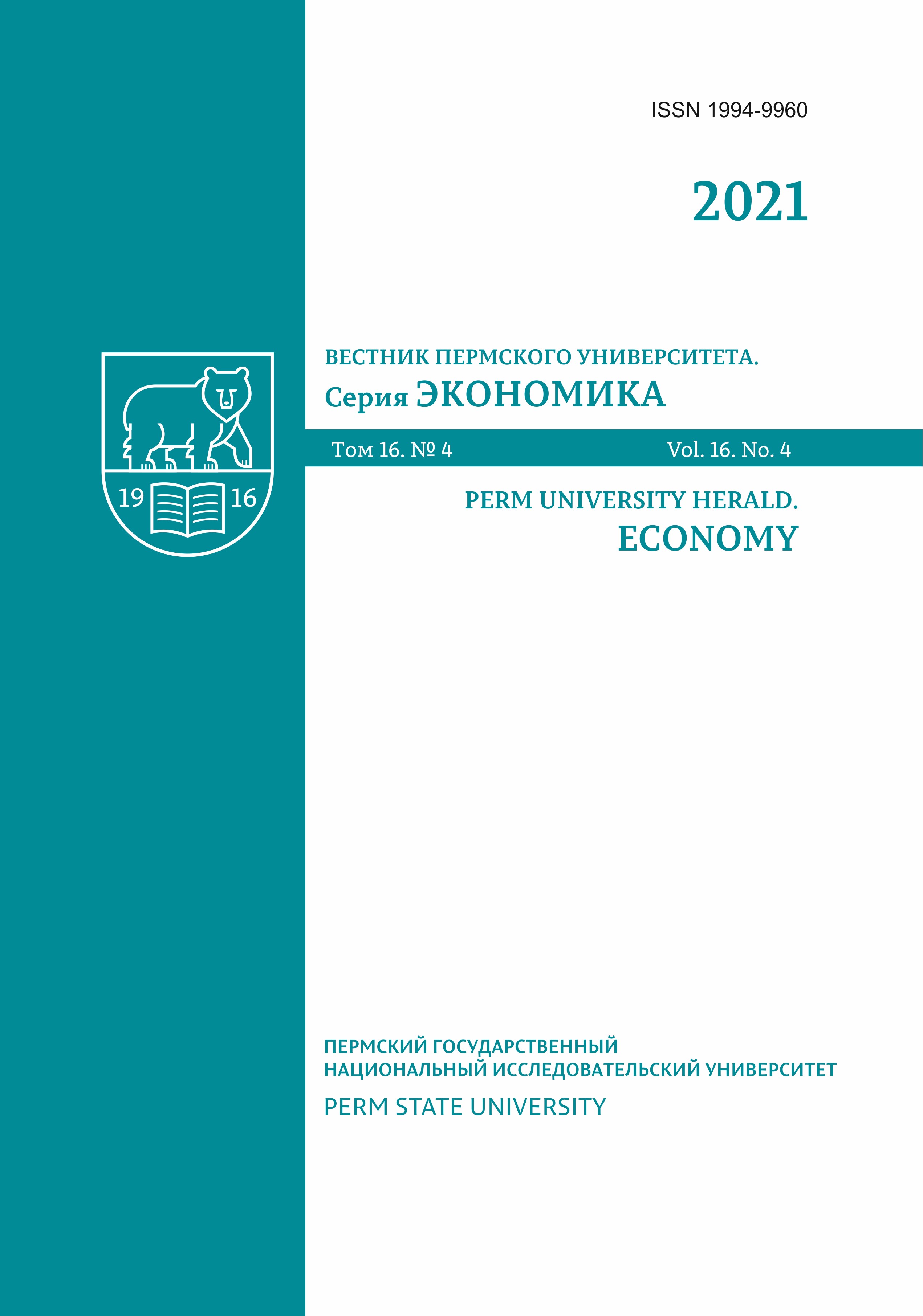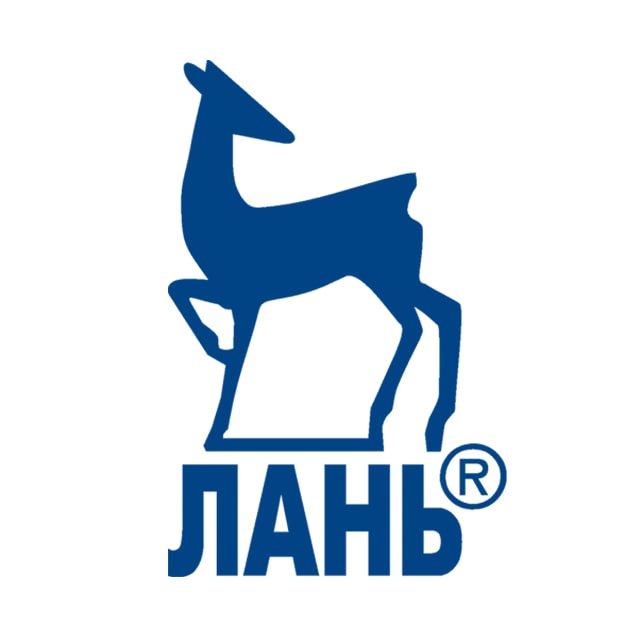Essence and classification of deferred taxes
DOI:
https://doi.org/10.17072/1994-9960-2021-4-421-448Abstract
Deferred taxes are an important object of accounting observation, which has a significant impact on management decision-making by users. At the current stage of development of accounting and tax accounting theory and practice, many aspects of tax effect recognition in the financial information system still remain debatable. This provides possibilities, including for accounting fraud, associated with veiling profit indicators and items in the enterprises’ financial statements. This causes the relevance of studying the essential features of deferred taxes, as well as the analysis of global experience in the assessment of arising “differences”, their classification, and accounting methods. The scientific novelty of the study lies in the development and substantiation of classification features of deferred taxes, including their systematization by methods of accounting, assessment and varieties. The paper characterizes the reason for accounting and taxation deviations, the evolution of the key deferred taxes types is described, the criteria for their registration in finance accounting are considered as the legislation in the USA, Great Britain, and other countries is improved. The paper defines the key challenges of accounting and estimation of deferred taxes, including the questions on theoretical inconsistency of deferred taxes with the concepts of assets and liabilities. The unresolved problems include the deferred tax depreciation procedure which is not regulated by the Russian accounting standards. In its turn, IFRS ascribes this procedure to the competence of the specialists who actively apply the method of creation (restoration) of valuation allowance for opportunistic purposes, which increases the importance of research in this area. The results of this work are useful for a wide range of experts specializing in the theory and practice of financial analysis, accounting and tax accounting and auditing and can serve as a basis for overcoming contradictions in the practice of deferred tax accounting. The prospects of the research lie in the empirical tests confirming the informational significance of deferred taxes in the financial statements of the Russian companies. What is more, the possible areas of scientific interest are the development of the accounting methods for deferred taxes depreciation and the connection of deferred taxes with bankruptcy and the company’s financial stability indicators. The growing attention of the academic community to deferred taxes could lead to the inclusion of a deferred taxes category in a comprehensive financial analysis of business activities.
Keywordsdeferred taxes, temporary differences, timing differences, deferred taxation, tax accounting, accounting, accounting gaps, asset-liability method, deferral method, deferred tax asset, deferred tax liability.
For citationAksent’ev A.A. Essence and classification of deferred taxes. Perm University Herald. Economy, 2021, vol. 16, no. 4, pp. 421–448. DOI 10.17072/1994-9960-2021-4-421-448
References1. Burgess D.O., Conrecode J.R., Valencia A., Volkan A.G. Simplifying deferred taxes. ABD Journal, 2012, vol. 4, no. 2, pp. 20–36.
2. Aksent'ev A.A., Ermolenko O.M. Nauchnyi i prikladnoi podkhod k opredeleniyu nalogovogo menedzhmenta [Scientific and applied approach to the definition of tax management]. Vestnik NGUEU [Vestnik NSUEM], 2021, no. 2, pp. 242–259. (In Russian). doi: 10.34020/2073-6495-2021-2-242-259.
3. Olomskaya E.V., Aksent'ev A.A. Ustranenie «probelov» v bukhgalterskom i nalogovom uchete: komparativnyi analiz zarubezhnogo opyta i rossiiskoi praktiki [Filling in the gaps in bookkeeping and tax accounting: A comparative analysis of international and Russian practices]. Mezhdunarodnyi bukhgalterskii uchet [International Accounting], 2021, vol. 24, no. 3 (477), pp. 338–368. (In Russian). doi: 10.24891/ia.24.3.338.
4. Musazi B., Makkawi B. The controversy of deferred tax assets and liabilities classifications and some remedies. Journal of Finance and Accountancy, 2019, no. 25. Available at: http://www.aabri.com/ manuscripts/182968.pdf (accessed 01.03.2021).
5. Guia L.D., Dantas J.A. Value relevance of deferred tax assets in the Brazilian banking industry. Revista Contabilidade and Finanças, 2020, vol. 31, no. 82, pp. 33–49. doi: 10.1590/1808-057x201808060.
6. Svoboda P., Bohusova H., Solilova V., Nerudova D. Importance of deferred tax reporting for external users – case of Czech Republic. International Journal of Business Tourism and Applied Sciences, 2017, vol. 5, no. 2, pp. 10–17.
7. Bohusova H., Svoboda P., Semeradova L. Deferred tax for tax planning in the Czech agricultural companies. Agricultural Economics, 2019, vol. 65, no. 8, pp. 349–358. doi: 10.17221/312/2018-AGRICECON.
8. Ettredge M.L., Sun L., Lee P., Anandarajan A. Is earnings fraud associated with high deferred tax and/or book minus tax levels? Auditing: A Journal of Practice and Theory, 2008, vol. 27, no. 1, pp. 1–33. doi: 10.2308/aud.2008.27.1.1.
9. Purina M. Deferred tax under IAS 12 in the chosen Czech and Russian companies. Procedia-Social and Behavioral Sciences, 2016, vol. 220, pp. 382–390. doi: 10.1016/j.sbspro.2016.05.512.
10. Harrington C., Smith W., Trippeer D. Deferred tax assets and liabilities: Tax benefits, obligations and corporate debt policy. Journal of Finance and Accountancy, 2012, vol. 11. Available at: https://www.aabri.com/manuscripts/121240.pdf (accessed 01.03.2021).
11. Acheampong D., Valencia A., Volkan A. Industry specific impact of simplifying deferred taxes. Journal of Finance and Accountancy, 2013, vol. 13. Available at: https://www.aabri.com/manuscripts/131485.pdf (accessed 01.03.2021).
12. Colley R., Rue J., Volkan A. Deferred taxes revisited. Journal of Business and Economics Research, 2004, vol. 2, no. 8, pp. 13–24. doi: 10.19030/jber.v2i8.2907.
13. Colley R., Rue J., Volkan A. Deferred taxes in the context of the unit problem. Journal of Finance and Accountancy, 2010, vol. 10. Available at: https://www.aabri.com/manuscripts/09231.pdf (accessed 01.03.2021).
14. Sebestikova V., Krzikallova K. The impact of deferred tax on company valuations in the case of mergers. Zeszyty Teoretyczne Rachunkowości [Theoretical Journal of Accounting], 2017, vol. 94, no. 150, pp. 131–143. doi: 10.5604/01.3001.0010.4998.
15. Geyer E.S. Problems of deferred taxes representation in accounting. Actual problems of economy, 2014, vol. 4, pp. 438–445. Available at: http://nbuv.gov.ua/UJRN/ape_2014_4_54 (accessed 01.03.2021).
16. Granitsa Yu.V. Otlozhennye nalogi i ikh rol' v prognozirovanii pokazatelei rezul'tatov deyatel'nosti predpriyatii na osnove individual'noi finansovoi otchetnosti [Deferred taxes and their role in forecasting the performance of enterprises on the basis of individual financial statements]. Ekonomika, predprinimatel'stvo i pravo [Economics, Entrepreneurship, and Law], 2018, vol. 8, no. 4, pp. 189–202. (In Russian). doi: 10.18334/epp.8.4.39516.
17. Kolchugin S.V., Kopenkina A.A. Vliyanie otlozhennykh nalogov na pokazateli finansovogo analiza [The influence of deferred taxes on indexes of financial analysis]. Problemy ucheta i finansov [Problems of Accounting and Finance], 2014, no. 4 (16), pp. 44–47. (In Russian).
18. Pankov V.V., Lavrushina V.B. Metody ucheta otlozhennykh nalogov [Accounting methods for deferred taxes]. Mezhdunarodnyi bukhgalterskii uchet [International Accounting], 2008, vol. 18, no. 11 (353), pp. 42–46. (In Russian).
19. Aksent'ev A.A. Kontseptsii ucheta otlozhennykh nalogov i ikh svyaz' s bukhgalterskimi ideologiyami [Deferred tax accounting concepts and their bond to the accounting ideologies]. Uchet. Analiz. Audit [Accounting. Analysis. Auditing], 2021, vol. 8, no. 4, pp. 34–50. (In Russian). doi: 10.26794/2408-9303-2021-8-4-34-50.
20. Olomskaya E.V., Aksent'ev A.A. PBU 18/02: Osnovy primeneniya balansovogo metoda [Russian accounting standards (PBU) 18/02: Principles on the balance method use]. Mezhdunarodnyi bukhgalterskii uchet [International Accounting], 2020, vol. 23, no. 12 (474), pp. 1356–1382. (In Russian). doi: 10.24891/ia.23.12.1356.
21. Shchepot'ev A.V. Vliyanie otlozhennykh nalogovykh aktivov i otlozhennykh nalogovykh obyazatel'stv na velichinu stoimosti deistvuyushchego biznesa [Impact of deferred tax assets and dereffred tax liabilities on the operating business value]. Imushchestvennye otnosheniya v Rossiiskoi Federatsii [Property Relations in the Russian Federation], 2018, no. 4 (199), pp. 33–39. (In Russian).
22. Pokrovskaya N.V., Antonets E.A. Otsenka otlozhennykh nalogovykh aktivov i otlozhennykh nalogovykh obyazatel'stv [Valuation of deferred tax assets and deferred tax liabilities]. Mezhdunarodnyi bukhgalterskii uchet [International Accounting], 2015, vol. 18, no. 11 (353), pp. 43–54. (In Russian).
23. Jones F.R. Pollock v. Farmers’ Loan and Trust Company. Harvard Law Review, 1895, vol. 9, no. 3, pp. 198–211. doi: 10.2307/1321669.
24. Chandler A.D. The visible hand: The managerial revolution in American business. Cambridge, Harvard University press, 1977. 624 p. doi: 10.2307/j.ctvjghwrj.
25. Previts G.J. American Accountancy, An Overview, 1900–1925. Business and Economic History, 1975, vol. 4, pp. 109–119.
26. Allen C.E. The growth of accounting instruction since 1900. The Accounting Review, 1927, vol. 2, no. 2, pp. 150–166.
27. Taylor J. Corporation income tax brackets and rates, 1909–2002. Statistics of Income. SOI Bulletin, 2003, vol. 23, no. 2, pp. 284–290.
28. Whitaker C. Bridging the Book-Tax Accounting Gap. The Yale Law Journal, 2005, vol. 115, no. 3, pp. 680–726.
29. Brouwer A., Naarding E. Making deferred taxes relevant. Accounting in Europe, 2018, vol. 15, no. 2, pp. 200–230. doi: 10.1080/17449480.2018.1451903.
30. Schultz S.M., Johnson R.T. Income tax allocation: The continuing controversy in historical perspective. Accounting Historians Journal, 1998, vol. 25, no. 2, pp. 81–111.
31. Bunaca R.A., Nurdayadi The impact of deferred tax expense and tax planning toward earnings management and profitability. Jurnal Bisnis Dan Akuntansi [Journal of Business and Accounting], 2019, vol. 21, no. 2, pp. 215–236. doi: 10.34208/jba.v21i2.625.
32. Black H.A. Interperiod allocation of corporate income taxes; Accounting research study no. 09. New York, AICPA, 1966. 123 p. Available at: https://egrove.olemiss.edu/cgi/viewcontent.cgi?article= 1154&context=aicpa_guides (accessed 26.03.2021).
33. Jaedicke R.K., Nelson C.L. The Allocation of Income Taxes – A Defense. Accounting Review, 1960, vol. 35, no. 2, pp. 278–281.
34. Chytis E. The informative value of taxes: The case of temporal differences in tax accounting. Journal of Accounting and Taxation, 2019, vol. 11 (8), pp. 130–138. doi: 10.5897/JAT2019.0350.
35. Kim J.B., Zhang L., Li Y. Corporate tax avoidance and stock price crash risk: Firm-level analysis. Journal of financial economics, 2011, vol. 100, no. 3, pp. 639–662. doi: 10.1016/j.jfineco.2010.07.007.











